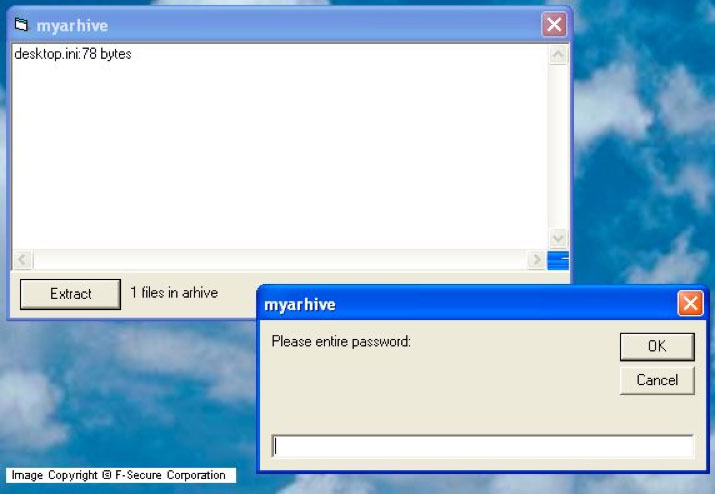Archiveus Trojan was one of the earliest ransomware viruses created. Archiveus was unleashed on the world in 2006, mainly affecting PC users. Additionally, the Archiveus Trojan was the first ever ransomware strand to use RSA encryption. RSA encryption is a public-key cryptosystems and is widely used for secure data transmission and is extremely difficult to decode. Decrypting or unlocking an RSA encrypted file requires a specific alpha-numeric string of digits.
The Archiveus Trojan encrypted everything in the MyDocuments directory and required victims to purchase items from an online pharmacy to receive the 30-digit password or key code to unlock their files.

F-Secure reports that the trojan is buggy, so some files may become corrupted after the trojan restores them.
Technically speaking, Archiveus is not considered a virus. But, it is most certainly intrusive and invites itself into a computer without the users expressed consent. It’s chief gateways onto computers are via questionable websites, free software downloads, spam email attachments for it can hide itself inside free downloads or unknown attachments.
Additionally, this bug can detect and find loopholes in the infected computer to download malware, spyware, ransomware, rogueware, worms and other infections to the computer. It is this situation that can make matters much worse for the user’s infected computer. If a ransomware strand is downloaded, the program has the ability to encrypt files stored on the computer. This is where the dilemma arises for the user. When the user attempts to open a file with a program, the program will provide a prompt that states that it is corrupted or will simply display scrambled text on the screen. Like many other ransomware viruses, the only way to recover the encrypted and locked files is to pay a ransom.
